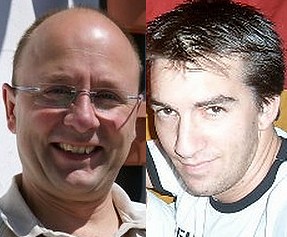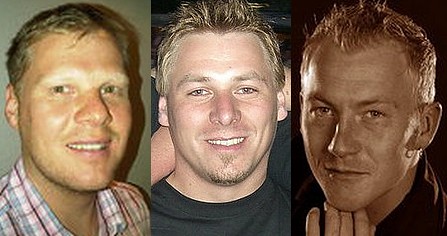An early Celtic presence in what is now Hesse is indicated by a mid 5th century BC La Tène style burial uncovered at Glauberg. The region was later settled by the Germanic Chatti tribe in ca. the 1st century BC, and the name Hesse is a continuation of that tribal name. In the early Middle Ages, a Frankish gau comprising an area around Fritzlar and Kassel and a Saxon one further north were known as Hessengau. In the 9th century the Saxon Hessengau also came under the rule of the Franconians. In the 12th century it was passed to Thuringia.
The district of Waldeck-Frankenberg was created in 1972 by merging the two districts of Frankenberg and Waldeck. Most of the area of the district was previously part of the Freistaat Waldeck, the successor of the principality of Waldeck.
Sample :
Brief anthropological analysis :
- Type 1 : Light complexion (light hair, light eyes, ...), more or less leptomorphic, a rather large face on some individuals, a high-rooted and convex nose, high cheekbones, close-set eyes, large jaw
~ Nordo-Dinaric


This category lacks unity : individuals come in all shape and complexion. Some individuals do show "Borreby" features, others are "Alpinid" as in Austria. There seems to be a subtle transition between both types somewhere in Germany but my skills don't allow me to tell more for the moment. It might just be an artefact eventually.
Final morphotypes :

http://anthroeurope.blogspot.ru/2011/04/waldeck-hesse-germany.html
The district of Waldeck-Frankenberg was created in 1972 by merging the two districts of Frankenberg and Waldeck. Most of the area of the district was previously part of the Freistaat Waldeck, the successor of the principality of Waldeck.
Brief anthropological analysis :
- Type 1 : Light complexion (light hair, light eyes, ...), more or less leptomorphic, a rather large face on some individuals, a high-rooted and convex nose, high cheekbones, close-set eyes, large jaw
~ Nordo-Dinaric



These individuals are rather Dutch/Belgian-looking : some authors have used the label "Keltic-Nordic" to label such type (generally used to describe similar types in the British Isles). By the way, terminology is rather useless : what matters is that such dinaromorphic type is nearly absent from more northern areas such as Lower Saxony and is quite abundant from Hesse to Bavaria. Some individuals are much more brachymorphic.

 Eventually one can find rather indistinct Nordoid types - noted for rather puffier features particularly in the nose area lacking dinaromorphism - which are frequent in the whole of Germanic lands. These individuals are not impressively leptomorphic, quite the contrary actually, and they smoothly lead us to the the second type one can detect.
Eventually one can find rather indistinct Nordoid types - noted for rather puffier features particularly in the nose area lacking dinaromorphism - which are frequent in the whole of Germanic lands. These individuals are not impressively leptomorphic, quite the contrary actually, and they smoothly lead us to the the second type one can detect.

 - Type 2 : Light complexion (light eyes, ...), brachymorphic, more or less little and broad nose, square-faced, broad forehead, wide-set eyes, rather long eyelids, large jaw
- Type 2 : Light complexion (light eyes, ...), brachymorphic, more or less little and broad nose, square-faced, broad forehead, wide-set eyes, rather long eyelids, large jaw
~ Alpinoid/Subnordid



 Eventually one can find rather indistinct Nordoid types - noted for rather puffier features particularly in the nose area lacking dinaromorphism - which are frequent in the whole of Germanic lands. These individuals are not impressively leptomorphic, quite the contrary actually, and they smoothly lead us to the the second type one can detect.
Eventually one can find rather indistinct Nordoid types - noted for rather puffier features particularly in the nose area lacking dinaromorphism - which are frequent in the whole of Germanic lands. These individuals are not impressively leptomorphic, quite the contrary actually, and they smoothly lead us to the the second type one can detect.
 - Type 2 : Light complexion (light eyes, ...), brachymorphic, more or less little and broad nose, square-faced, broad forehead, wide-set eyes, rather long eyelids, large jaw
- Type 2 : Light complexion (light eyes, ...), brachymorphic, more or less little and broad nose, square-faced, broad forehead, wide-set eyes, rather long eyelids, large jaw~ Alpinoid/Subnordid



Final morphotypes :



